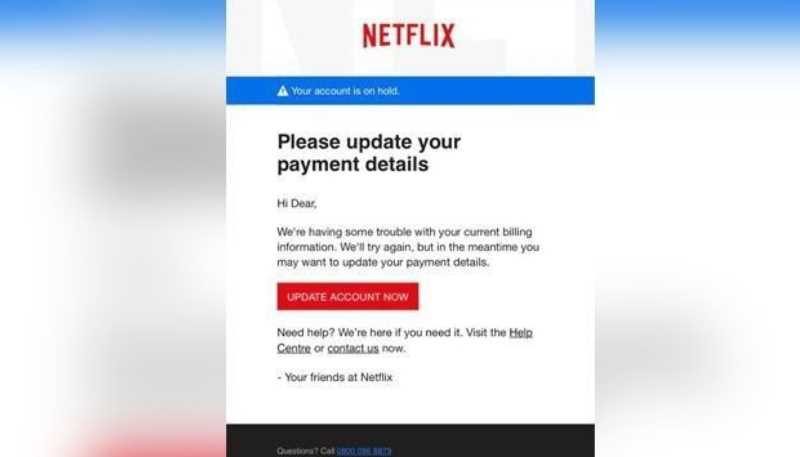New Netflix Phishing Scam Has Been Identified
Mike Sanders / 6 years ago

Netflix Phishing Scam
Anyone who has regularly used the internet will be aware that there are more than a few minefields to dodge when it comes to scams. For example, I regularly receive e-mails telling me about purchases made on my Apple account. While I haven’t, of course, made any purposes, the idea is that my panic may lead me to make some very poor decisions or, being more diplomatic, not take the time to really scrutinise the report.
In an official statement from the FTC (Federal Trade Commission), however, it seems that one of the more recent scams may be targeting Netflix users.

What Is Phishing?
Phishing is very different from being ‘hacked‘. Rather than the company having obtained your information, a ‘phishing’ scam attempts to get you to voluntarily give up your information. For example, you will receive a fairly legitimate looking e-mail often advising you about unusual activity on your account or at least something to do with money.
The e-mail will contain a link which will send you to a log-in page. If you do, however, log in via this website, you have just given away your username and password to the company. Yes, this is how the scam works, they don’t steal your information. You volunteer it!
To give you an idea, here is the exact e-mail I received from ‘Apple’.

Clicking the link (which fortunately Google Chrome correctly detected as fake), I was greeted with this page. Looks legit, right? Wrong! This is a fake website and solely created to attempt to steal my information. This is the very definition of phishing. They didn’t put anything malicious on my system. At least, not yet. They instead attempted to ‘panic’ me into doing it without stopping to think.

Ways To Avoid These Scams
These are very common, but we’re still more than happy to give you some basic tips to avoid being caught.
- Check the e-mail address. Usually, the sender’s e-mail will have some resemblance to the official company but a closer look should start the alarm bells ringing. For example support@appletechnicalsupportdata.co.in (In my Apple incident, the e-mail was -jadisekali9362.04@securedts-panjat.site).
- Check the content – Look for generic errors in the content. Spelling mistakes or a generic opening message ‘Dear Sirs/Dear Customer’. In addition, also consider how good the e-mail looks. Are the images exceptionally low quality?
- Visit the official website – Do not click ANY link within the e-mail. If you have concerns either contact the company by telephone or visit their official website.
- Some common sense – Remember the old idiom, no company will ever ask you for your e-mail or password!
Above all though, treat every e-mail with great cynicism. The internet is great fun, but there’s always someone out there who wants your money!
What do you think? Do you regularly receive scam e-mails? Do you have any other internet security top tips? – Let us know in the comments!



















